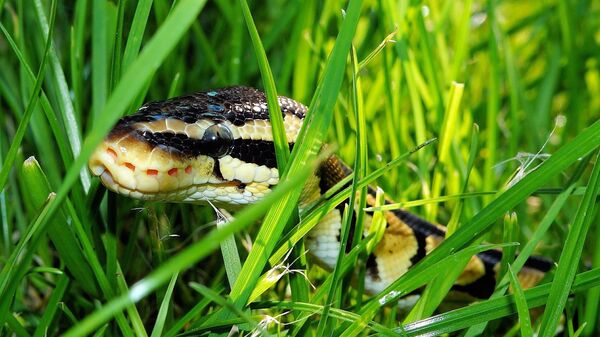The disease, called Snake Fungal Disease (SFD), is caused by a fungus called Ophidiomyces ophidiodiicola, forming painful and infectious lesions on snake skin.
In a study published in the Science Advances Journal last week, researchers at the American Museum of Natural History (AMNH), the US Geological Survey (USGS) and the University of Maryland explained that the fungal disease has infected snakes in the US and in Europe. Over 23 species of snakes are currently infected.
"This really is the worst-case scenario," Frank Burbrink, the lead author of the study, wrote in a recent AMNH press release. "Our study suggests that first responders shouldn't just be looking for certain types of snakes that have this disease, but at the whole community. All snakes could become infected, or already are infected."
According to researchers, snakes sit out in the sun for long periods of time to shed the infected skin but, as a result, snakes are subsequently more easily taken by hungry birds and other predators while basking.
"Some of the most devastating wildlife diseases ever documented, such as white-nose syndrome in bats and chytridiomycosis in amphibians, are caused by fungal pathogens," said Jeffrey Lorch, a microbiologist with the USGS National Wildlife Health Center. "These diseases have had such great impacts because they affect multiple species, and it now looks like the same is true of snake fungal disease."
All animals, including snakes, participate in the balance of the planet's ecosystem. A decrease in the number of snakes could result in a surge of rats, which are usually preyed on by snakes.
The study was unable to find an association between the fungal disease and the types of snakes getting infected.
"The data for our model may not be perfect, but it will tell you if there's even a weak association between a characteristic — for example, eating a certain type of animal or living in a particular environment — and the potential to get this disease," Burbrink said. "And in this study, our model found no association other than 'you are a snake.' "
The researchers strongly believe that scientists and governments must work together to stop the disease from reaching Asia and Australia, which have large snake populations.
"Scientists have learned a lot about research and monitoring needs from 25 years of studying the effects of chytrid fungi on amphibians, and those lessons tell us that prevention is the best policy," wrote Karen Lips, a professor of biology at the University of Maryland, in a recent report.
"Researchers need to work with decision makers to prevent snake fungal disease from spreading, survey museums and field sites to determine the current distribution of the disease, run trials in the lab, and start working on treatments," Lips added.

